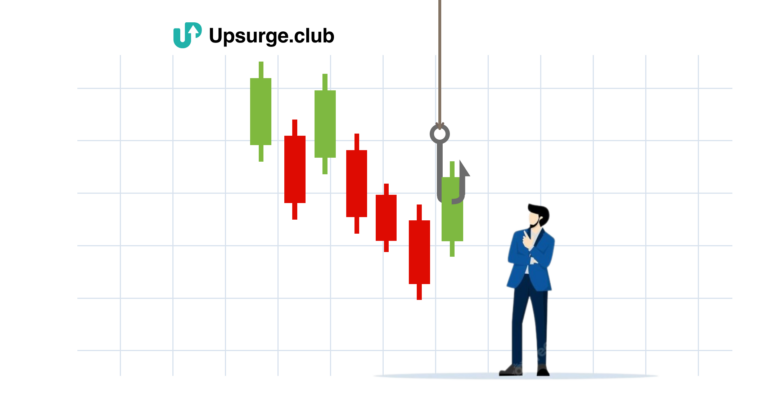Embarking on a career as an intraday trader has become increasingly popular, with thousands of traders seeking to capitalize on its potential for full-time earnings. However, navigating this space of intraday trading can be overwhelming for beginners. To ease this journey, we present a comprehensive guide tailored for novices, including all essential factors to consider while entering into the world of intraday trading.
What is Intraday Trading?
Intraday trading is also known as “within-the-day” trading. It involves buying and selling securities within the same trading day.
Traders look for stocks that are likely to move either up or down. Buying low and selling high is the approach for potential upward movements, while short selling involves selling high and buying low for anticipated downward movements.
Successful intraday trading demands a keen understanding of market behavior to make timely and profitable decisions.
Is Intraday Trading Different from Regular Trading?
Yes, Intraday trading is different from regular trading. As a beginner, you might find yourself struggling to choose the right tools to execute intraday trades effectively, leading to potential losses. Understanding the key difference between intraday and regular trading is crucial.
In intraday, you must square off your positions before the market closes, regardless of profit or loss, while in regular trading, you can hold your positions for a longer period.
Additionally, intraday trading does not involve a change in share ownership, whereas regular trading results in a share ownership transfer to your Demat account after settlement.
To learn intraday trading for stocks or intraday options trading educate yourself through reliable sources and intraday trading courses from Upsurge.club to enhance your skills and make informed decisions for successful trading.
Factors to Consider for Intraday Trading
Here are some crucial factors for intraday trading which can help you navigate the markets more confidently:
1. Choose the Right Stocks
Intraday trading or Day trading is all about picking good stocks. For intraday trading, you can choose high-liquidity large-cap and mid-cap equities based on your preferences and risk appetite.
Their liquidity ensures ease of buying and selling within a trading session, enhancing your chances of success in this fast-paced market.
2. Always Set Stop Loss
After purchasing a stock, set a stop loss immediately. This step is crucial to safeguarding your funds from significant losses if the stock moves against your expectations.
For instance, if you purchase a stock at Rs. 500 with hopes it will rise, set a stop loss at Rs. 490. If the stock drops to Rs. 490, your stop loss will trigger, selling the stock at a loss of Rs. 10, but protecting you from further downside risks if the price slumps below Rs. 490.
Be proactive and protect your investments with stop-loss orders.
3. Determine Entry and Exit Targets
To improve your day trading strategy, focus on trading with the prevailing trend. This strategy offers low-risk entry positions and high gains if the trend continues. Identifying such patterns will help you establish effective entry and stop-loss strategies.
To determine when to exit, keep two conditions in mind: reaching your target profit and hitting your maximum loss limit.
Once you achieve your desired profit level, consider making an exit, ensuring you stay within your predefined risk tolerance. You can also use technical analysis to determine entry/exit points.
4. Don’t Get Impulsive
As a trader, if your trading position does not turn out as expected, don’t get disheartened and avoid trading with emotions. Success in trading demands constant alertness and self-control.
Utilize historical analysis to identify opportunities and craft trading strategies accordingly. Set clear profit and stop loss levels, and resist letting impulsivity dictate your trades. Stick to your well-defined entry and exit strategy without changing it impulsively mid-trade.
Stay focused, and you’ll be on the path to achieving your trading goals.
5. Start Small
As a beginner in day trading, it’s natural to feel confident after a few successful trades. However, it’s crucial not to be overly aggressive initially. Focus on just 1-2 stocks to start with, gradually increasing volume and value as you gain experience.
This approach allows you to learn from mistakes and understand market dynamics better. As your knowledge and risk appetite grow, refine your day trading strategy by increasing trade volume steadily.
6. Keep a Journal of Your Trades
Maintain a trading journal to track all your trades, including entry and exit points, reasons for trading, and outcomes.
This helps analyze your performance, identify strengths and weaknesses, and make efficient intraday trading strategies.
Enroll in an Intraday Trading Course
Enrolling in a course is one of the most effective ways to learn the ropes of intraday trading swiftly. Upsurge.club offers comprehensive trading courses designed to help you understand and align with the market trend.
Via Upsurge.club’s intraday trading course, you’ll learn that buying stocks is the right moment based on trends. This will ensure you stay informed and make educated decisions, which is paramount to achieving success in intraday trading.
Conclusion
Now that you have a strong foundation, you can confidently handle the ins and outs of day trading.
Remember to stay disciplined, manage risk prudently, and continuously educate yourself. To further enhance your skills and knowledge, consider enrolling in day trading courses on Upsurge.club.
These courses will surely guide you towards achieving more success in the exciting realm of intraday trading. Good luck with your thrilling journey!



